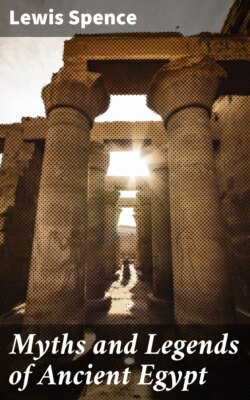Читать книгу Myths and Legends of Ancient Egypt - Lewis Spence - Страница 19
На сайте Литреса книга снята с продажи.
Funeral Offerings
ОглавлениеThe tomb furniture of the Egyptians of the higher ranks was elaborate and costly—chairs, jars, weapons, mirrors, sometimes even chariots, and wigs. Beginning with the Middle Kingdom (Eighteenth Dynasty), small statuettes, called ushabtiu, were placed in each tomb. These represented various trades, and were supposed to assist or serve the deceased in the otherworld. The walls of the tomb and the sides of the sarcophagus were usually covered with texts from the Book of the Dead, or formulæ devoting offerings of loaves, geese, beer, and other provisions to the ka of the deceased. The burial ceremony was stately and imposing. Sometimes it chanced that the corpse had to be conveyed by water, and gaily painted boats held the funeral procession; or else the chain of mourners moved slowly along by the western bank of the Nile. The ceremonial at the tomb appears to have been almost of a theatrical character, and symbolized the night journey of Ra-Osiris. The prescribed prayers were recited, and incense was offered up. The kinsmen of the deceased were loud in their lamentations, and were assisted in these by a professional class of mourners who 'keened' loudly and shrilly as the procession slowly approached the mastaba, or tomb, in which the mummy was to be laid to rest. It was taken from the coffin when it arrived at the door of its long home, and was placed upright against the wall of the mastaba by a priest wearing the mask of the jackal-headed god Anubis. At this point an elaborate ceremony was performed, known as the 'opening of the mouth.' With many magical spells and signs the mouth of the deceased was opened by means of a hook, after which he was supposed to be able to make use of his mouth for the purpose of speaking, eating, or drinking. Special literature had sprung up in connexion with this custom, and was known as The Book of the Opening of the Mouth. Elaborate and numerous were the instruments employed in the ceremony: the pesh-ken, or hook, made of a pinkish flint, the knife of greyish-green stone, the vases, small stone knives representing the 'metal of the north' and the 'metal of the south,' the unguents and oils, and so on. Interminable was the ceremonial in the case of a person of importance, at least twenty-eight formulæ having to be recited, many of which were accompanied by lustration, purification, and, on the part of the priests who officiated, a change of costume. The coffin containing the mummy was then lowered into the tomb by means of a long rope, and was received by the grave-diggers.
